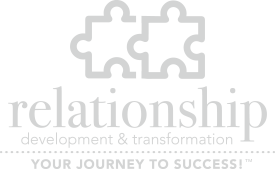Many therapists do not understand the 12-Step recovery process unless they have participated in a 12-Step program. Although they may encourage their clients to do so, they may feel perplexed or intimated, or act patronizing. Often, therapists don’t realize that the 12-Steps are not merely an antidote for addiction but are guidelines for nothing less than a total personality transformation. Bill Wilson, the founder of Alcoholics Anonymous, was influenced by Carl Jung, whom he wrote seeking a treatment for alcoholism. Jung replied that the cure would have to be a spiritual one – a power equal to the power of spiritus vivi, or alcohol. He thought that addicts were “misguided ‘seekers for the spirit,’ …in the world of Dionysus, the god of renewal through the light from below, from the earth rather than from the heavens…” (Whitmont 227).
The 12 Steps provide a spiritual remedy. They outline a process of surrender of the ego to the unconscious, God or a higher power, and very much resemble the process of transformation in Jungian therapy. Jung believed that unity and wholeness of the personality, which generates a sense of acceptance and detachment, occurs when both the conscious and unconscious demands are taken into account – when not the ego, but the Self, is at the center of consciousness (Storr 19). He wrote that his life was “a story of the self-realization of the unconscious,” and rediscovered, as suggested by the 12 Steps, that God was “a guiding principle of unity” (Storr 24-25).
The following is a summary of how the Steps work; however, any linear description is misleading, because, like transformation, the process is circular. Although these steps apply to numerous addictions, whether to a person, a substance (e.g. alcohol, drugs, food) or a process (e.g., sex, gambling, debting), the focus here is on alcohol and drug addiction and the family members who are in a codependent relationship with the alcoholic/addict.
Facing the Problem:
The beginning of recovery is acknowledging that there is a problem involving drugs or alcohol, that there is help outside oneself, and the willingness to utilize it. This also represents the beginning of hope and trust in something beyond oneself (such as a therapist, sponsor, or the program). Invariably, it has taken years to face the problem, but by opening a closed family system, and learning about addiction, denial starts to thaw. The first part of “working the First Step” is an admission of powerlessness. Step 1 reads: “We admitted we were powerless over alcohol – that our lives have become unmanageable.” (Other words, such as “food,” “gambling,” or “people, places and things” are often substituted for the word alcohol.) The substance abuser begins to understand s/he is powerless over drugs or alcohol, and the codependent slowly learns that she or he cannot control the substance abuser. The struggle not to drink and the codependent’s vigilance over the addict begin to slip away. Gradually, attention starts to shift from the substance, and, for the codependent, the substance abuser to focus on oneself. Before taking this Step, endless therapy sessions are spent by the alcoholic, wondering, “Why do I drink?” and the spouse complaining about the addict’s behavior.


